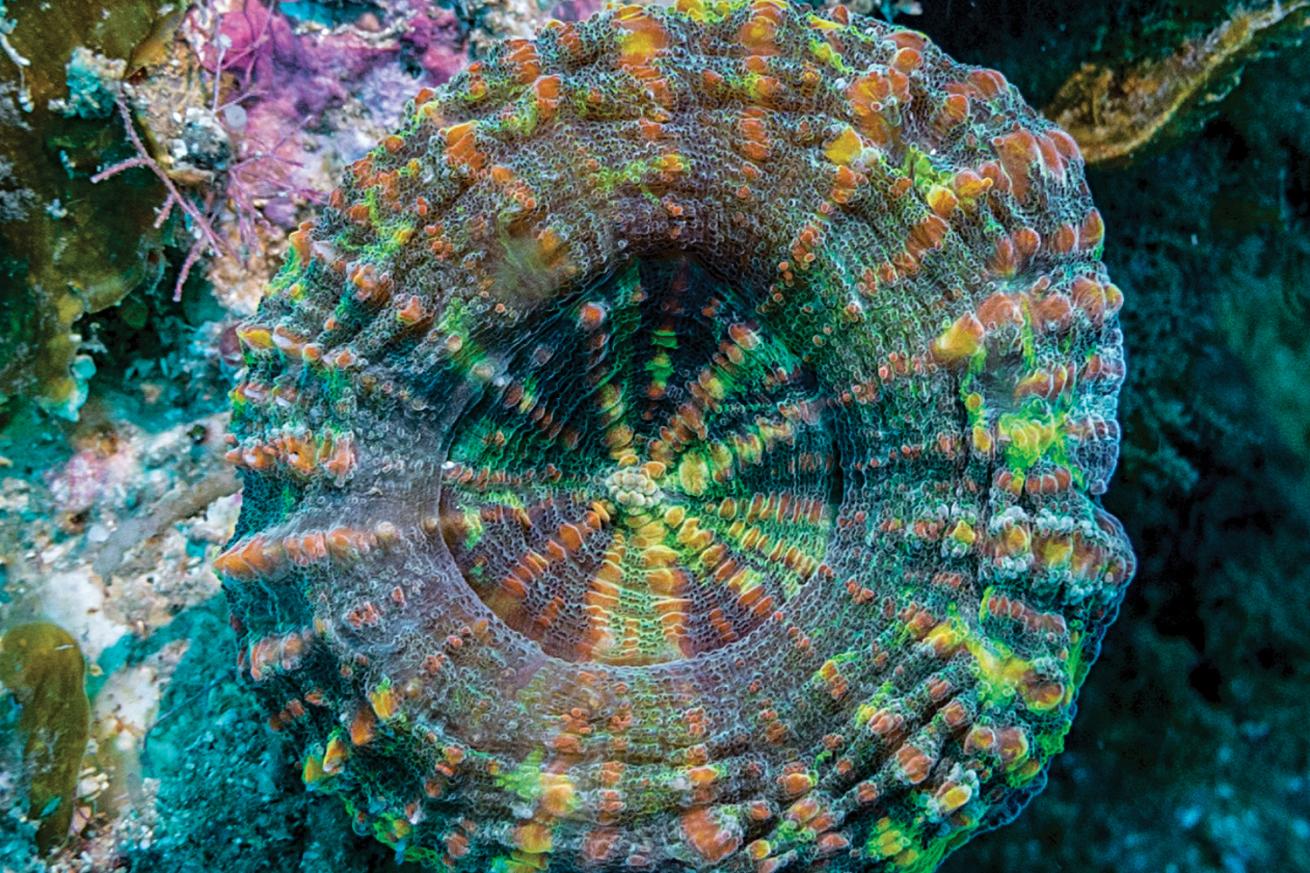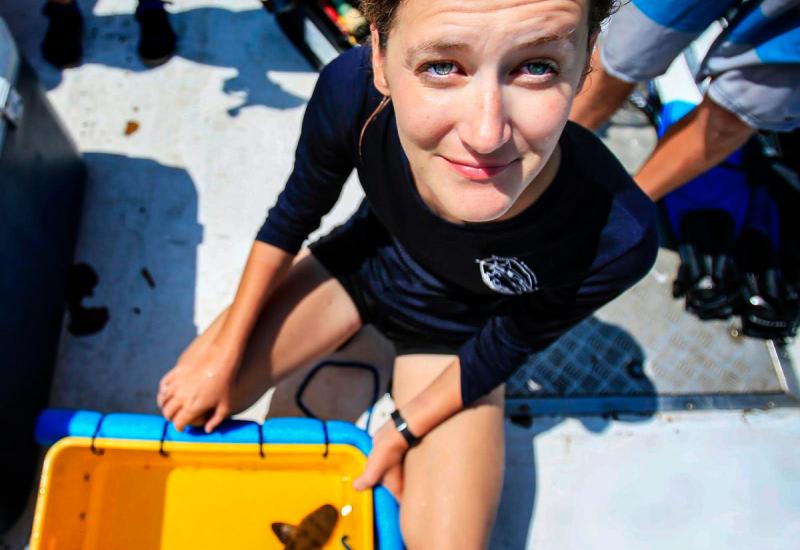How to Identify Fleshy Disk Coral

Nicole HelgasonScolymia lacera, AKA Fleshy Disk Coral.
If you’re like me, every time you get in the water, you have a wish list of corals (or fish) you want to spot. In the Caribbean, my list always includes a big bold scolymia written at the top.
There are two species of Scolymia in the Caribbean. Scolymia lacera is the big momma of Caribbean corals, with the second species of Scolymia being noticeably smaller in size.
You can never predict the endless combinations of colors, patterns or stripes. If ever there were a definition of a diamond in the rough, this is it.
Scolymia is the brightest, most colorful coral in the Caribbean. Some coral colors are predictable — Acropora cervicornis will always be yellow, gold or golden yellow. But Scolymia looks like it took psychedelics and never looked back.
The common name for Scolymia lacera is the fleshy disk coral. Mature colonies can be up to 6 inches in diameter, making it the biggest single polyp species in the Caribbean. The disk has a fleshy mantle with a mouth at the center, giving the appearance of a soft coral, but under the fleshy polyp is a hard calcium skeleton.
The best way to tell the two Scolymia species apart is size: The smaller species (Scolymia cubensis) is only 1 to 2 inches wide. However, for smaller colonies, size won’t help. Look for the lines of skeletal teeth radiating from the center of the polyp toward the edge of the coral, which are more prominent in Scolymia lacera.










